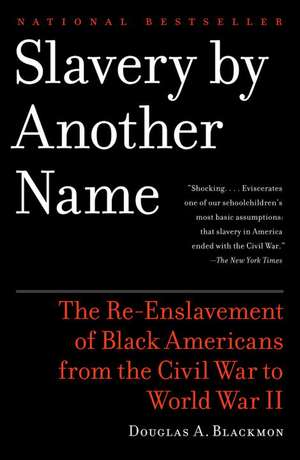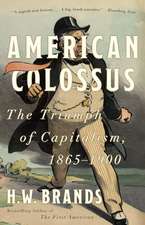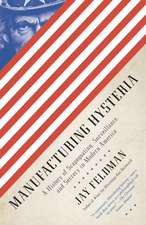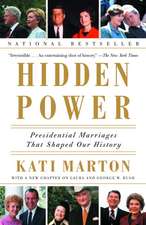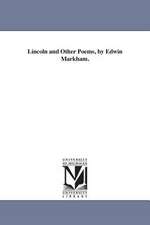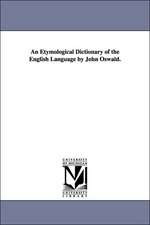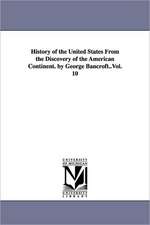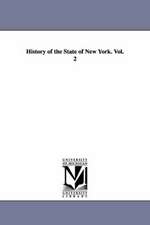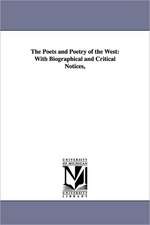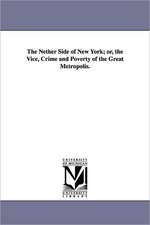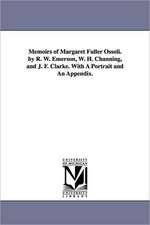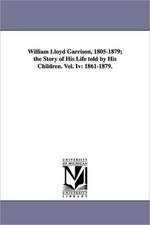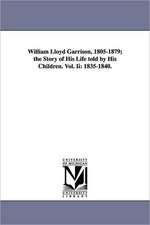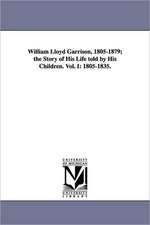Slavery by Another Name: The Re-Enslavement of Black Americans from the Civil War to World War II
Autor Douglas A. Blackmonen Limba Engleză Paperback – 31 dec 2008
Vezi toate premiile Carte premiată
Pulitzer Prize (2009)
Preț: 115.50 lei
Nou
Puncte Express: 173
Preț estimativ în valută:
22.10€ • 23.13$ • 18.39£
22.10€ • 23.13$ • 18.39£
Carte disponibilă
Livrare economică 10-24 martie
Preluare comenzi: 021 569.72.76
Specificații
ISBN-13: 9780385722704
ISBN-10: 0385722702
Pagini: 468
Ilustrații: 8 PP. B&W
Dimensiuni: 135 x 203 x 28 mm
Greutate: 0.45 kg
Editura: Anchor Books
ISBN-10: 0385722702
Pagini: 468
Ilustrații: 8 PP. B&W
Dimensiuni: 135 x 203 x 28 mm
Greutate: 0.45 kg
Editura: Anchor Books
Notă biografică
A native of Leland, Mississippi, Doug Blackmon is the Wall Street Journal's Atlanta Bureau Chief. He lives in Atlanta with his wife and their two children.
Extras
Chapter I
The Wedding
Fruits of Freedom
Freedom wasn’t yet three years old when the wedding day came. Henry Cottinham and Mary Bishop had been chattel slaves until the momentous final days of the Civil War, as nameless in the eyes of the law as cows in the field. All their lives, they could no more have obtained a marriage license than purchased a horse, a wagon, or a train ticket to freedom in the North. Then a final furious sweep of Union soldiers—in a bewildering blur of liberation and terror unleashed from a distant war—ravaged the Cahaba River valley.
Henry was suddenly a man. Mary was a woman, a slave girl no more. Here they stood, bride and groom, before John Wesley Starr, the coarse old preacher who a blink of an eye before had spent his Sundays teaching white people that slavery was the manifestation of a human order ordained by God, and preaching to black people that theirs was a glorified place among the chickens and the pigs.
To most people along the Cahaba River, January 1868 hardly seemed an auspicious time to marry. It was raw, cold, and hungry. In every direction from the Cottingham Loop, the simple dirt road alongside which lived three generations of former slaves and their former owners, the land and its horizons were muted and bitter. The valley, the undulating hills of Bibb County, even the bridges and fords across the hundred-yard-wide Cahaba sweeping down from the last foothills of the Appalachians and into the flat fertile plains to the south, were still wrecked from the savage cavalry raids of Union Gen. James H. Wilson. Just two springs earlier, in April 1865, his horsemen had descended on Alabama in billowing swarms. The enfeebled southern army defending the state scattered before his advance. Even the great Confederate cavalry genius Nathan Bedford Forrest, his regiments eviscerated by four years of war, was swept aside with impunity. Wilson crushed the last functioning industrial complex of the Confederacy and left Alabama in a state of complete chaos. Not three years later, the valley remained a twisted ruin. Fallow fields. Burned barns. Machinery rusting at the bottoms of wells. Horses and mules dead or lost. The people, black and white, braced for a hard, anxious winter.
From the front porch of Elisha Cottingham’s house, two stories stacked of hand-hewn logs and chinked with red clay dug at the river’s edge, the old man looked out on his portion of that barren vista. The land had long ago lost nearly all resemblance to the massive exuberance of the frontier forest he stumbled upon fifty years earlier. Now, only the boundaries and contours remained of its carefully tended bounty of the last years before the war.
He had picked this place for the angle of the land. It unfolded from the house in one long sheet of soil, falling gradually away from his rough-planked front steps. For nearly five hundred yards, the slope descended smoothly toward the deep river, layered when Elisha first arrived with a foot of fertile humus. On the east and south, the great field was hemmed in by a gushing creek, boiling up over turtle-shell shapes of limestone protruding from the banks, growing deeper and wider, falling faster and more furiously—strong enough to spin a small grist mill—before it turned to the west and suddenly plunged into the Cahaba. He named the stream Cottingham Creek. An abounding sense of possibility exuded from the place Elisha had chosen, land on which he intuitively knew a resourceful man could make his own indelible mark.
Yet in the aftermath of the war Elisha Cottingham, like countless other southern whites in 1868, must have felt some dread sense of an atomized future. They knew that the perils of coming times constituted a far greater jeopardy than the war just lost. A society they had engineered from wilderness had been defeated and humiliated; the human livestock on which they had relied for generations now threatened to rule in their place. In the logical spectrum of possibilities for what might yet follow, Elisha had to consider the terrifying—and ultimately realized—possibility that all human effort invested at the confluence of Cottingham Creek and the Cahaba River would be erased. The alacrity that infused their achievement was lost. More than a century later, the last Cottingham would be gone. No trace of the big house, the slave cabins, or a waterwheel would survive. None of the fields hacked from the forest remained at plow. Only the creek and sun-bleached gravestones clustered atop the hill still bore the Cottingham name.
Elisha had arrived at the banks of the Cahaba, barely a man himself, in an Alabama territory that was still untamed. It was 1817, and Elisha and his three brothers faced a dense wilderness governed by the uncertainties of Indian territory and the vagaries of an American nation debating the precepts of eminent domain that would ultimately expand its borders from the Atlantic to the Pacific Ocean.1 Alabama would not be a state for two more years.
Elisha’s brother Charles soon decamped to the newly founded county seat of Centreville, where in short order shallow-draft riverboats would land and a trading center would be established.2 Another brother, William, moved farther south. But Elisha and his younger sibling, John, stayed in the wilderness on the Cahaba. In the four decades before the Civil War, they staked out land, brought in wives, cleared the lush woodlands, sired bountiful families, and planted season upon season of cotton. The engines of their enterprises were black slaves. In the early years, they imported them to Alabama and later bred more themselves—including Henry—from the African stock they bought at auction or from peripatetic slave peddlers who arrived unbidden in springtime with traces of ragged, shackled black men and women, carrying signs advertising “Negroes for Sale.” Manning farms strung along a looping wagon road, the brothers and their slaves cleared the land, raised cabins, and built the church where they would pray. Harnessing their black labor to the rich black land, the Cottingham brothers became prosperous and comfortable.
Some neighbors called the Cottingham section of the county Pratt’s Ferry, for the man who lived on the other side of the Cahaba and poled a raft across the water for a few pennies a ride. But the Cottinghams, God-fearing people who gathered a congregation of Methodists in the wilderness almost as soon as they had felled the first timber, adopted for their homestead a name marking the work not of man but of the Almighty. Where the clear cold creek gurgled into the Cahaba, a massive bulge of limestone rose from the water, imposing itself over a wide, sweeping curve in the river. To the Cottinghams, this place was Riverbend.
The Cottinghams demanded a harsh life of labor from their bondsmen. Otherwise, what point was there to the tremendous investment required of owning slaves. Yet, especially in contrast to the industrial slavery that would eventually bud nearby, life on the Cottingham plantation reflected the biblical understanding that cruelty to any creature was a sin—that black slaves, even if not quite men, were at least thinly made in the image of God.
Set among more than twenty barns and other farm buildings, Henry and the rest of the slaves lived in crude but warm cabins built of rough-hewn logs chinked with mud. Heat came from rock fireplaces with chimneys made of sticks and mud. Elisha recorded the ownership of thirteen slaves in 1860, including four men in their twenties and thirties and six other male teenagers. A single twenty-year-old female lived among the slaves, along with two young boys and a seven-year-old girl.
Given the traditions of isolated rural farms, Elisha’s grandson Oliver, raised there on the Cottingham farm, would have been a lifelong playmate of the slave boy nearly his same age, named Henry.4 When Elisha Cottingham’s daughter Rebecca married a neighbor, Benjamin Battle, in 1852, Elisha presented to her as a wedding gift the slave girl who likely had been her companion and servant. “In consideration of the natural love and affection which I bear to my daughter,” Elisha wrote, I give her “a certain negro girl named Frances, about 14 years old.”
Those slaves who died on the Cottingham place were buried with neat ceremony in plots marked by rough unlabeled stones just a few feet from where Elisha himself would be laid to rest in 1870—clearly acknowledged as members in some manner of a larger human family recognized by the master. Indeed, Elisha buried his slaves nearer to him by far than he did Rev. Starr, the man who ministered to all of the souls on the Cottingham place. The Starr family plot, with its evangelical inscriptions and sad roster of infant dead, was set down the hill and toward the road, even more vulnerable to the creeping oblivion of time.
Long generations hence, descendants of slaves from the plantation still recounted a vague legend of the generosity of a Cottingham master— giving permission to marry to a favored mulatto named Green. That slave, who would remain at Elisha’s side past emancipation and until the old master’s death, would become the namesake of Henry and Mary’s youngest son.
But even as Elisha had allowed a strain of tenderness to co-reside with the brutally circumscribed lives of his slaves, he never lost sight of their fundamental definition—as cattle. They were creatures bought or bred for the production of wealth. Even as he deeded to daughter Rebecca the slave Frances, Elisha was careful to enumerate in the document the recognition that he was giving up not just one slave girl, but a whole line of future stock who might have brought him cash or labor. Along with Frances, Elisha was careful to specify, his newlywed daughter received all “future increase of the girl.”
The marriage of Henry, now twenty years old, and Mary, one year his junior, in 1868 was the first among Cottingham people, black or white, in two seasons. Another slave, Albert, had wed, and left for good in the middle of the first picking time after the destruction of the war—amid the chaos and uncertainty when no one could be sure slavery had truly ended.7 Albert didn’t wait to find out.
Now, two years later, the coming marriage surely warmed Elisha at some level. But as Henry prepared to take a wife and become a man of this peculiar new era, everything the old white man had forged—everything on which that gift to his daughter twenty years before had been predicated—hung in the fragile limbo of a transformed social order. Whatever satisfaction the filial ties gave the white master at the wedding of his former bondsman would have been tempered by the poverty and grief that had overwhelmed him.
Most of Elisha’s slaves remained nearby. Some still worked his property, for wages or a share of the cotton crop. But the end of the war had left the white Cottinghams at a point of near desolation. The hard winter threatened to bring them to their knees.
As Henry and Mary’s wedding approached in 1868, whites across the South strained to accept the apparently inevitable ignominies descending from the war. The loss of fortunes, the war’s blood and sorrow, the humiliation of Union soldiers encamped in their towns, all these things whites had come to bear. They would bear them a little longer, at least until the instant threats of hunger and military force receded.
But these abominations paled against the specter that former slaves, with their huge mathematical majorities in Louisiana, Mississippi, southern Alabama, south Georgia, and South Carolina, would soon vote and rule governments and perhaps take their masters’ lands. This vision was a horror almost beyond contemplation. It poisoned the air for Elisha and other white landowners with prospects for even greater disaster.
In the last days of fighting, the U.S. Congress had created the Freedmen’s Bureau to aid the South’s emancipated slaves.8 New laws gave the agency the power to divide land confiscated by the federal government and to have “not more than forty acres of such land . . . assigned” to freedmen and black war refugees for a period of three years. Afterward, the law said former slaves would be allowed to purchase the property to hold forever. President Andrew Johnson rescinded the provision a few months later, but emancipated slaves across the South remained convinced that northern soldiers still garrisoned across the region would eventually parcel out to them all or part of the land on which they had long toiled.
The threat that Elisha’s former slaves would come to own his plantation—that he and his family would be landless, stripped of possessions and outnumbered by the very creatures he had bred and raised—was palpable.
The last desperate rallying calls of the Confederacy had been exhortations that a Union victory meant the political and economic subjugation of whites to their black slaves. In one of the final acts of the Confederate Congress, rebel legislators asserted that defeat would result in “the confiscation of the estates, which would be given to their former bondsmen.”
Already, forty thousand former slaves had been given title by Gen. William Tecumseh Sherman to 400,000 acres of rich plantation land in South Carolina early in 1865. It was unclear whether blacks would be able to retain any of the property, but rumor flared anew among blacks across the South the next year at Christmastime—the end of the annual crop season—that plantation land everywhere would soon be distributed among them. The U.S. Congress debated such a plan openly in 1867, as it drew up the statutes to govern Reconstruction in the southern states. And again as harvest time ended that year, word whipped through the countryside that blacks would soon have land. At one point the following year, in 1868, during a period of intense speculation among freed slaves that land was soon to be provided to them, many blacks purchased boundary markers to be prepared for the marking off of their forty-acre tracts.
Forty miles to the west of the Cottingham farm, in Greene County, hundreds of former slaves filed suit against white landowners in 1868 demanding that the former slave masters be compelled to pay wages earned during the prior season’s work. Whites responded by burning down the courthouse, and with it all 1,800 lawsuits filed by the freedmen.
Despite Bibb County’s remote location, far from any of the most famous military campaigns, the Civil War had not been a distant event. In the early months of fighting, Alabama industrialists realized that the market for iron sufficient for armaments would become lucrative in the South. In 1860 only Tredegar Iron Works, a vast industrial enterprise in Richmond, Virginia, driven by more than 450 slaves and nearly as many free laborers, could produce battle-ready cannon for the South. The Confederate government, almost from the moment of its creation, set out to spur additional capacity to make arms, particularly in Alabama, where a nascent iron and coal industry was already emerging and little fighting was likely to occur. During the war, a dozen or more new iron furnaces were put into blast in Alabama;12 by 1864, the state was pumping out four times more iron than any other southern state.
The Wedding
Fruits of Freedom
Freedom wasn’t yet three years old when the wedding day came. Henry Cottinham and Mary Bishop had been chattel slaves until the momentous final days of the Civil War, as nameless in the eyes of the law as cows in the field. All their lives, they could no more have obtained a marriage license than purchased a horse, a wagon, or a train ticket to freedom in the North. Then a final furious sweep of Union soldiers—in a bewildering blur of liberation and terror unleashed from a distant war—ravaged the Cahaba River valley.
Henry was suddenly a man. Mary was a woman, a slave girl no more. Here they stood, bride and groom, before John Wesley Starr, the coarse old preacher who a blink of an eye before had spent his Sundays teaching white people that slavery was the manifestation of a human order ordained by God, and preaching to black people that theirs was a glorified place among the chickens and the pigs.
To most people along the Cahaba River, January 1868 hardly seemed an auspicious time to marry. It was raw, cold, and hungry. In every direction from the Cottingham Loop, the simple dirt road alongside which lived three generations of former slaves and their former owners, the land and its horizons were muted and bitter. The valley, the undulating hills of Bibb County, even the bridges and fords across the hundred-yard-wide Cahaba sweeping down from the last foothills of the Appalachians and into the flat fertile plains to the south, were still wrecked from the savage cavalry raids of Union Gen. James H. Wilson. Just two springs earlier, in April 1865, his horsemen had descended on Alabama in billowing swarms. The enfeebled southern army defending the state scattered before his advance. Even the great Confederate cavalry genius Nathan Bedford Forrest, his regiments eviscerated by four years of war, was swept aside with impunity. Wilson crushed the last functioning industrial complex of the Confederacy and left Alabama in a state of complete chaos. Not three years later, the valley remained a twisted ruin. Fallow fields. Burned barns. Machinery rusting at the bottoms of wells. Horses and mules dead or lost. The people, black and white, braced for a hard, anxious winter.
From the front porch of Elisha Cottingham’s house, two stories stacked of hand-hewn logs and chinked with red clay dug at the river’s edge, the old man looked out on his portion of that barren vista. The land had long ago lost nearly all resemblance to the massive exuberance of the frontier forest he stumbled upon fifty years earlier. Now, only the boundaries and contours remained of its carefully tended bounty of the last years before the war.
He had picked this place for the angle of the land. It unfolded from the house in one long sheet of soil, falling gradually away from his rough-planked front steps. For nearly five hundred yards, the slope descended smoothly toward the deep river, layered when Elisha first arrived with a foot of fertile humus. On the east and south, the great field was hemmed in by a gushing creek, boiling up over turtle-shell shapes of limestone protruding from the banks, growing deeper and wider, falling faster and more furiously—strong enough to spin a small grist mill—before it turned to the west and suddenly plunged into the Cahaba. He named the stream Cottingham Creek. An abounding sense of possibility exuded from the place Elisha had chosen, land on which he intuitively knew a resourceful man could make his own indelible mark.
Yet in the aftermath of the war Elisha Cottingham, like countless other southern whites in 1868, must have felt some dread sense of an atomized future. They knew that the perils of coming times constituted a far greater jeopardy than the war just lost. A society they had engineered from wilderness had been defeated and humiliated; the human livestock on which they had relied for generations now threatened to rule in their place. In the logical spectrum of possibilities for what might yet follow, Elisha had to consider the terrifying—and ultimately realized—possibility that all human effort invested at the confluence of Cottingham Creek and the Cahaba River would be erased. The alacrity that infused their achievement was lost. More than a century later, the last Cottingham would be gone. No trace of the big house, the slave cabins, or a waterwheel would survive. None of the fields hacked from the forest remained at plow. Only the creek and sun-bleached gravestones clustered atop the hill still bore the Cottingham name.
Elisha had arrived at the banks of the Cahaba, barely a man himself, in an Alabama territory that was still untamed. It was 1817, and Elisha and his three brothers faced a dense wilderness governed by the uncertainties of Indian territory and the vagaries of an American nation debating the precepts of eminent domain that would ultimately expand its borders from the Atlantic to the Pacific Ocean.1 Alabama would not be a state for two more years.
Elisha’s brother Charles soon decamped to the newly founded county seat of Centreville, where in short order shallow-draft riverboats would land and a trading center would be established.2 Another brother, William, moved farther south. But Elisha and his younger sibling, John, stayed in the wilderness on the Cahaba. In the four decades before the Civil War, they staked out land, brought in wives, cleared the lush woodlands, sired bountiful families, and planted season upon season of cotton. The engines of their enterprises were black slaves. In the early years, they imported them to Alabama and later bred more themselves—including Henry—from the African stock they bought at auction or from peripatetic slave peddlers who arrived unbidden in springtime with traces of ragged, shackled black men and women, carrying signs advertising “Negroes for Sale.” Manning farms strung along a looping wagon road, the brothers and their slaves cleared the land, raised cabins, and built the church where they would pray. Harnessing their black labor to the rich black land, the Cottingham brothers became prosperous and comfortable.
Some neighbors called the Cottingham section of the county Pratt’s Ferry, for the man who lived on the other side of the Cahaba and poled a raft across the water for a few pennies a ride. But the Cottinghams, God-fearing people who gathered a congregation of Methodists in the wilderness almost as soon as they had felled the first timber, adopted for their homestead a name marking the work not of man but of the Almighty. Where the clear cold creek gurgled into the Cahaba, a massive bulge of limestone rose from the water, imposing itself over a wide, sweeping curve in the river. To the Cottinghams, this place was Riverbend.
The Cottinghams demanded a harsh life of labor from their bondsmen. Otherwise, what point was there to the tremendous investment required of owning slaves. Yet, especially in contrast to the industrial slavery that would eventually bud nearby, life on the Cottingham plantation reflected the biblical understanding that cruelty to any creature was a sin—that black slaves, even if not quite men, were at least thinly made in the image of God.
Set among more than twenty barns and other farm buildings, Henry and the rest of the slaves lived in crude but warm cabins built of rough-hewn logs chinked with mud. Heat came from rock fireplaces with chimneys made of sticks and mud. Elisha recorded the ownership of thirteen slaves in 1860, including four men in their twenties and thirties and six other male teenagers. A single twenty-year-old female lived among the slaves, along with two young boys and a seven-year-old girl.
Given the traditions of isolated rural farms, Elisha’s grandson Oliver, raised there on the Cottingham farm, would have been a lifelong playmate of the slave boy nearly his same age, named Henry.4 When Elisha Cottingham’s daughter Rebecca married a neighbor, Benjamin Battle, in 1852, Elisha presented to her as a wedding gift the slave girl who likely had been her companion and servant. “In consideration of the natural love and affection which I bear to my daughter,” Elisha wrote, I give her “a certain negro girl named Frances, about 14 years old.”
Those slaves who died on the Cottingham place were buried with neat ceremony in plots marked by rough unlabeled stones just a few feet from where Elisha himself would be laid to rest in 1870—clearly acknowledged as members in some manner of a larger human family recognized by the master. Indeed, Elisha buried his slaves nearer to him by far than he did Rev. Starr, the man who ministered to all of the souls on the Cottingham place. The Starr family plot, with its evangelical inscriptions and sad roster of infant dead, was set down the hill and toward the road, even more vulnerable to the creeping oblivion of time.
Long generations hence, descendants of slaves from the plantation still recounted a vague legend of the generosity of a Cottingham master— giving permission to marry to a favored mulatto named Green. That slave, who would remain at Elisha’s side past emancipation and until the old master’s death, would become the namesake of Henry and Mary’s youngest son.
But even as Elisha had allowed a strain of tenderness to co-reside with the brutally circumscribed lives of his slaves, he never lost sight of their fundamental definition—as cattle. They were creatures bought or bred for the production of wealth. Even as he deeded to daughter Rebecca the slave Frances, Elisha was careful to enumerate in the document the recognition that he was giving up not just one slave girl, but a whole line of future stock who might have brought him cash or labor. Along with Frances, Elisha was careful to specify, his newlywed daughter received all “future increase of the girl.”
The marriage of Henry, now twenty years old, and Mary, one year his junior, in 1868 was the first among Cottingham people, black or white, in two seasons. Another slave, Albert, had wed, and left for good in the middle of the first picking time after the destruction of the war—amid the chaos and uncertainty when no one could be sure slavery had truly ended.7 Albert didn’t wait to find out.
Now, two years later, the coming marriage surely warmed Elisha at some level. But as Henry prepared to take a wife and become a man of this peculiar new era, everything the old white man had forged—everything on which that gift to his daughter twenty years before had been predicated—hung in the fragile limbo of a transformed social order. Whatever satisfaction the filial ties gave the white master at the wedding of his former bondsman would have been tempered by the poverty and grief that had overwhelmed him.
Most of Elisha’s slaves remained nearby. Some still worked his property, for wages or a share of the cotton crop. But the end of the war had left the white Cottinghams at a point of near desolation. The hard winter threatened to bring them to their knees.
As Henry and Mary’s wedding approached in 1868, whites across the South strained to accept the apparently inevitable ignominies descending from the war. The loss of fortunes, the war’s blood and sorrow, the humiliation of Union soldiers encamped in their towns, all these things whites had come to bear. They would bear them a little longer, at least until the instant threats of hunger and military force receded.
But these abominations paled against the specter that former slaves, with their huge mathematical majorities in Louisiana, Mississippi, southern Alabama, south Georgia, and South Carolina, would soon vote and rule governments and perhaps take their masters’ lands. This vision was a horror almost beyond contemplation. It poisoned the air for Elisha and other white landowners with prospects for even greater disaster.
In the last days of fighting, the U.S. Congress had created the Freedmen’s Bureau to aid the South’s emancipated slaves.8 New laws gave the agency the power to divide land confiscated by the federal government and to have “not more than forty acres of such land . . . assigned” to freedmen and black war refugees for a period of three years. Afterward, the law said former slaves would be allowed to purchase the property to hold forever. President Andrew Johnson rescinded the provision a few months later, but emancipated slaves across the South remained convinced that northern soldiers still garrisoned across the region would eventually parcel out to them all or part of the land on which they had long toiled.
The threat that Elisha’s former slaves would come to own his plantation—that he and his family would be landless, stripped of possessions and outnumbered by the very creatures he had bred and raised—was palpable.
The last desperate rallying calls of the Confederacy had been exhortations that a Union victory meant the political and economic subjugation of whites to their black slaves. In one of the final acts of the Confederate Congress, rebel legislators asserted that defeat would result in “the confiscation of the estates, which would be given to their former bondsmen.”
Already, forty thousand former slaves had been given title by Gen. William Tecumseh Sherman to 400,000 acres of rich plantation land in South Carolina early in 1865. It was unclear whether blacks would be able to retain any of the property, but rumor flared anew among blacks across the South the next year at Christmastime—the end of the annual crop season—that plantation land everywhere would soon be distributed among them. The U.S. Congress debated such a plan openly in 1867, as it drew up the statutes to govern Reconstruction in the southern states. And again as harvest time ended that year, word whipped through the countryside that blacks would soon have land. At one point the following year, in 1868, during a period of intense speculation among freed slaves that land was soon to be provided to them, many blacks purchased boundary markers to be prepared for the marking off of their forty-acre tracts.
Forty miles to the west of the Cottingham farm, in Greene County, hundreds of former slaves filed suit against white landowners in 1868 demanding that the former slave masters be compelled to pay wages earned during the prior season’s work. Whites responded by burning down the courthouse, and with it all 1,800 lawsuits filed by the freedmen.
Despite Bibb County’s remote location, far from any of the most famous military campaigns, the Civil War had not been a distant event. In the early months of fighting, Alabama industrialists realized that the market for iron sufficient for armaments would become lucrative in the South. In 1860 only Tredegar Iron Works, a vast industrial enterprise in Richmond, Virginia, driven by more than 450 slaves and nearly as many free laborers, could produce battle-ready cannon for the South. The Confederate government, almost from the moment of its creation, set out to spur additional capacity to make arms, particularly in Alabama, where a nascent iron and coal industry was already emerging and little fighting was likely to occur. During the war, a dozen or more new iron furnaces were put into blast in Alabama;12 by 1864, the state was pumping out four times more iron than any other southern state.
Recenzii
“Shocking. . . . Eviscerates one of our schoolchildren's most basic assumptions: that slavery in America ended with the Civil War.”—The New York Times“An astonishing book. . . . It will challenge and change your understanding of what we were as Americans-and of what we are.”—Chicago Tribune “The genius of Blackmon's book is that it illuminates both the real human tragedy and the profoundly corrupting nature of the Old South slavery as it transformed to establish a New South social order.”—The Atlanta Journal-Constitution“A formidably researched, powerfully written, wrenchingly detailed narrative.”—St. Louis Post-Dispatch
Descriere
In this historical expos, Blackmon brings to light one of the most shameful chapters in American history--an Age of Neoslavery that thrived from the aftermath of the Civil War through the dawn of World War II. photographs.
Premii
- Pulitzer Prize Winner, 2009
